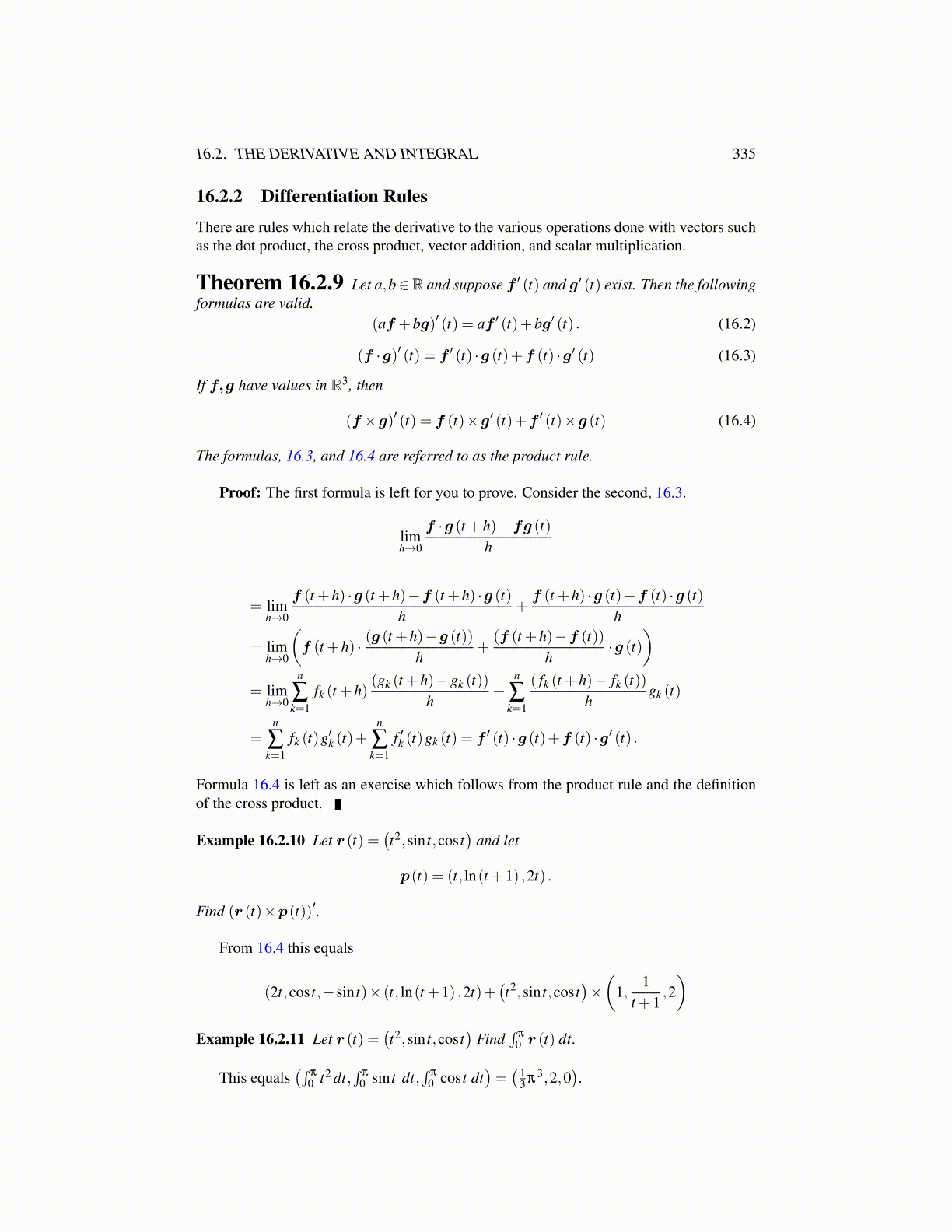
16.2. THE DERIVATIVE AND INTEGRAL 335
16.2.2 Differentiation RulesThere are rules which relate the derivative to the various operations done with vectors suchas the dot product, the cross product, vector addition, and scalar multiplication.
Theorem 16.2.9 Let a,b∈R and suppose f ′ (t) and g′ (t) exist. Then the followingformulas are valid.
(af +bg)′ (t) = af ′ (t)+bg′ (t) . (16.2)
(f ·g)′ (t) = f ′ (t) ·g (t)+f (t) ·g′ (t) (16.3)
If f,g have values in R3, then
(f ×g)′ (t) = f (t)×g′ (t)+f ′ (t)×g (t) (16.4)
The formulas, 16.3, and 16.4 are referred to as the product rule.
Proof: The first formula is left for you to prove. Consider the second, 16.3.
limh→0
f ·g (t +h)−fg (t)h
= limh→0
f (t +h) ·g (t +h)−f (t +h) ·g (t)h
+f (t +h) ·g (t)−f (t) ·g (t)
h
= limh→0
(f (t +h) · (g (t +h)−g (t))
h+
(f (t +h)−f (t))h
·g (t))
= limh→0
n
∑k=1
fk (t +h)(gk (t +h)−gk (t))
h+
n
∑k=1
( fk (t +h)− fk (t))h
gk (t)
=n
∑k=1
fk (t)g′k (t)+n
∑k=1
f ′k (t)gk (t) = f ′ (t) ·g (t)+f (t) ·g′ (t) .
Formula 16.4 is left as an exercise which follows from the product rule and the definitionof the cross product.
Example 16.2.10 Let r (t) =(t2,sin t,cos t
)and let
p(t) = (t, ln(t +1) ,2t) .
Find (r (t)×p(t))′.
From 16.4 this equals
(2t,cos t,−sin t)× (t, ln(t +1) ,2t)+(t2,sin t,cos t
)×(
1,1
t +1,2)
Example 16.2.11 Let r (t) =(t2,sin t,cos t
)Find
∫π
0 r (t) dt.
This equals(∫
π
0 t2 dt,∫
π
0 sin t dt,∫
π
0 cos t dt)=( 1
3 π3,2,0).